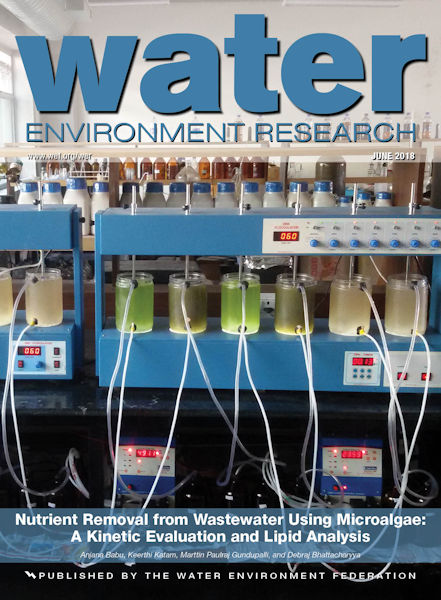In the June issue of Water Environment Research (WER), an open-access research article explores the best model to use when examining the fate of microconstituents in wastewater.
In the article, “General Fate Model for Microconstituents in an Activated Sludge System,” researchers discuss evaluating biodegradation models for the microconstituents 17-ethinylestradiol, bisphenol-A, and triclosan. The study identifies biotransformation as the principal removal mechanism for microconstituents and the pseudo-second-order model as the most accurate.
“In their research on microconstituent removal in activated sludge systems, Banihashemi and Droste found that the solids retention time played a major role in developing a large enough degrading population to accomplish pollutant removal,” said Tim Ellis, WER editor-in-chief. “Evaluation of the mass flux of microconstituents in the system showed that biodegradation and not adsorption was the dominant removal mechanism. The authors determined that a pseudo-second-order model best described the removal rate.”
Other papers published in this issue include
- “Adsorption and Oxidation of As(III) on Iron (Hydro)Oxides,”
- “Effect of Water Quality and Temperature on the Efficiency of Two Kinds of Hydrophilic Polymers in Soil,”
- “Performance and Kinetics of Nitrification of Low Ammonia Wastewater at Low Temperature,”
- “Phytoplankton Functional Groups Variation and Influencing Factors in a Shallow Temperate Lake,”
- “Nutrient Removal from Wastewater Using Microalgae: A Kinetic Evaluation and Lipid Analysis,”
- “Statistical Exposé of a Multiple-Compartment Anaerobic Reactor Treating Domestic Wastewater,”
- “Biosorptive Removal of Cadmium by Tinospora cordifolia (Wild Giloy) ,” and
- “Development and Application of a Model to Study Water Technology Adoption.”









June 23, 2018
WEF Resources & Efforts